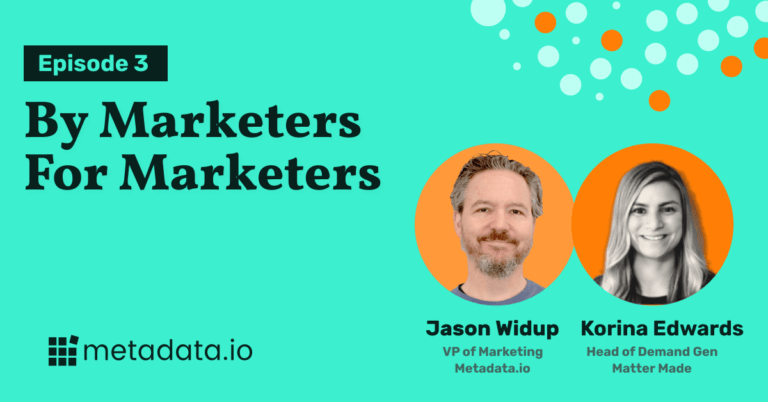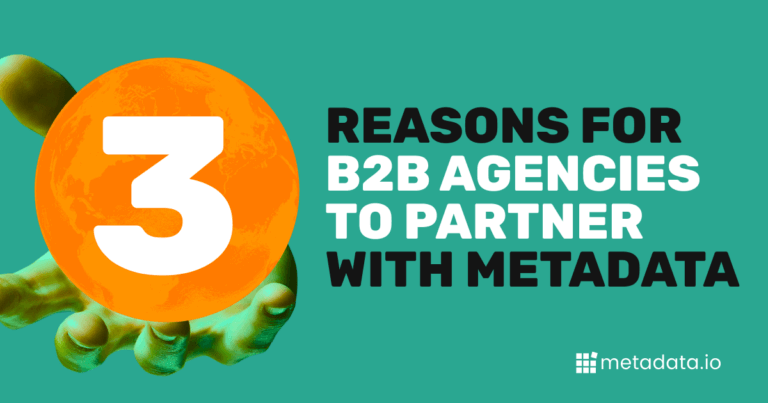How to Optimize Your B2B Events Strategy (and How AI Can Help)
The global direct business event industry lost $1.9 trillion between 2020 and 2022 as the COVID-19 pandemic cast a dark shadow over B2B marketers’ events strategies. No surprise there.
But what may surprise you is how quickly marketers have picked up where they left off. According to Bizzabo, 98% of event organizers planned to host at least one in-person event in 2023, while 85% planned to host at least three.
So, yeah, events are definitely back, which means it’s time to get your strategy in order. Here are a few pre- and post-event tactics you can steal to do just that, including some pretty nitty ones that take advantage of the latest in artificial intelligence.
Events are back, but they’re not perfect
Events are emerging from the shadows, but according to Lindsay McGuire, Associate Director of Content and Campaigns at Goldcast—and presenter at DEMAND 2023—you could be leaving money on the table.
How? By making either of these missteps.
Misstep #1: Your events are run and done
Most events march to a similar drum:
- The opening keynote
- Sessions and networking opportunities
- The closing keynote (and maybe a mic drop)
We know there’s more that goes into B2B events, especially on the planning front, but you get the point. That’s typically how events go.
Here’s the problem with that agenda: That mic-drop moment often signals the end of the event for everyone. Marketing teams shift their focus to the next event or campaign and attendees, well, forget 90% of what they learned. At best, attendees get a follow-up email that goes something like, “Hey, thanks for attending our event. Wanna buy our product?”
These follow-up emails are important and should play a big part in your post-event distribution strategy, but that can’t be the only button you press.
Events can’t be a one-off thing. There’s so much more you can do to keep the momentum and make sure you’re getting a return on the months of work you put into the event.
Misstep #2: You build your events in siloes
Try as you might, silos exist at your company, so it’s not unrealistic to say that your teams may be running events without any idea that other teams are hosting them, too.
For example, your Customer Success team could host an event about increasing customer lifetime value (LTV), while your Customer Support team could plan one about customer service best practices. While both events might be valuable for the business and attendees, here’s the problem with building them so independently: There’s likely no central theme or connection to your overall go-to-market (GTM) message.
In Lindsay’s DEMAND session, she said,

She continued, “At the end of the day, this impacts your bottom line, and makes events seem a lot more expensive than they probably are.”
See the problem?
Pre- and post-event tactics to make your events shine
Connecting the dots between your events will pay immediate dividends, but you can do more to make them even better—both before and after they wrap up.
Pre-event success: Plan and promote
What’s worse than an event with empty seats? That’s a trick question. Nothing. Avoid the potential crickets by aligning your teams before the event, sticking to one story, and promoting it like it’s no one’s business.

Align everyone on their roles and responsibilities
It all starts here. If the marketers, salespeople, support, and CS folks aren’t aligned on their roles and responsibilities, you’re up a creek without a paddle.
The best pre-event strategies are built on a foundation in which everyone involved—and we mean everyone—understands not only what they’re doing, but what everyone else is up to as well. It doesn’t matter if you’re planning the event, writing ad copy, or coordinating with the speakers; you need to make expectations crystal clear.

Stick to one story
Imagine attending two conferences from the same company…that revolve around two completely different stories. It’d be like HubSpot hosting INBOUND only to follow it up with one about outbound strategies.
While that may be an extreme example, you can imagine the mixed message those conflicting narratives would send to HubSpot’s audience.
The companies with the most successful events, like HubSpot INBOUND, build them around a central theme.
For Lindsay and her team at Goldcast, their recent conference, AI Summit: How Marketers Can Harness the Power of AI, revolved around AI (go figure). But she also synced up the conference with the launch of Content Lab, their new AI-powered feature designed to help customers repurpose content at scale.

By aligning on one story, HubSpot, Goldcast, and others put a stake in the ground and send a message to the market—and then tell that story across their social channels, ads, blogs, videos, and larger marketing assets.
Use AI to spark creativity
While we’re all excited to welcome hybrid and in-person events back, that doesn’t mean you should completely kick technology to the curb. Actually, you should embrace it more than ever, especially artificial intelligence (AI).
AI-powered tools can help you:
- Come up with creative titles
- Digest attendee feedback
- Brainstorm ideas
- Create unique graphics
- Draft copy for emails and social posts
- …and so much more.
You can also use a tool like Tableau to comb through event data and build visual reports that inform future events.
That said, don’t turn over complete power to the robots. Lindsay said,

Post-event success: Keep the momentum across channels
What’s better than an event that shines beyond the closing keynote and generates pipeline and revenue for months to come? That’s another trick question. Nothing. Make this goal a reality by implementing a post-event strategy that repurposes your content across channels and reaches an even larger audience.
Repurpose your content across channels
Multichannel repurposing is the name of the game here. Seriously. You have a goldmine of content, so tap into it and spread the wealth wherever your audience spends their time online.
Once you wrap up your event, let your sessions (or engaging chunks of them) run free across social media, your blog, and in email sequences from your Sales team. Take it a step further by turning your most engaging and well-attended sessions, which you can figure out with AI, into larger assets like guides and ebooks. (We’re not the biggest fans of gated content, but you do you.)
Here’s an even easier post-event win: Put the full, on-demand sessions on YouTube to drive organic traffic and get in front of a new audience. We hate to say it again, but doing more with less is still important, which means you should still be looking for ways to increase efficiency and maximize your time. Don’t waste a second recreating the wheel—you have plenty of content at your fingertips.
Get the entire crew involved
It’s not just on you to keep the momentum going; get other teams involved, too. For example, ask your Sales team to send prospects emails highlighting the event’s main takeaways.
At the same time, ask your Customer Success team to reach out to their customers who attended and see what resonated with them. This will help you plan even better, more tailored events in the future. You can even draft social posts about the event and encourage the rest of your company—regardless of the team—to share it on their social channels.
Lean on AI…again
There are benefits of using AI after your event as well. Use tools like Writer to draft copy for emails and social posts. Meanwhile, take advantage of tools like Content Lab to break your videos into bite-sized chunks for social media.
Think of AI as a way to get the ball rolling. Lindsay said it well during her session: “Whether you think about AI as your little intern, buddy, friend, or sidekick, it should be able to help you create a sh*tty first draft.” At the end of the day, AI will get you 80% there and then you can use your noggin to make it *perfect.*
The benefits of using AI in your events strategy
For better or worse, AI still has a somewhat negative connotation, and that’s fair. There’s still so much unknown about the technology and, frankly, the potential is a bit intimidating. From a marketing and events standpoint, however, AI-powered tools have benefits you can’t ignore.
For Lindsay, there are four benefits:
- Personalization: AI can analyze attendee data and personalize the experience. For example, you could recommend speakers and sessions relevant to individual attendees or create personalized email sequences based on which sessions someone attended.
- Optimization: With AI, you can evaluate attendee behavior and identify trends to ensure you’re delivering content that’ll resonate. At the same time, you can use AI to pinpoint underperforming content.
- Lead scoring: A less common, but no less valuable benefit of AI? Enhanced lead scoring. Use AI to track prospects’ engagement on social media, aggregate that data across channels, and pinpoint the most qualified leads.
- Efficiency: We can’t talk about the benefits of AI without highlighting the efficiency gains. Tap into AI to automate repetitive tasks, quickly analyze mountains of data (without a ton of manual work), and predict outcomes related to attendance—all without relying on other teams.
And the best part? These benefits create more memorable events that build demand, which trickle down to a greater return on your investment in B2B events.
Want more from DEMAND 2023? Check out all of the on-demand sessions.


